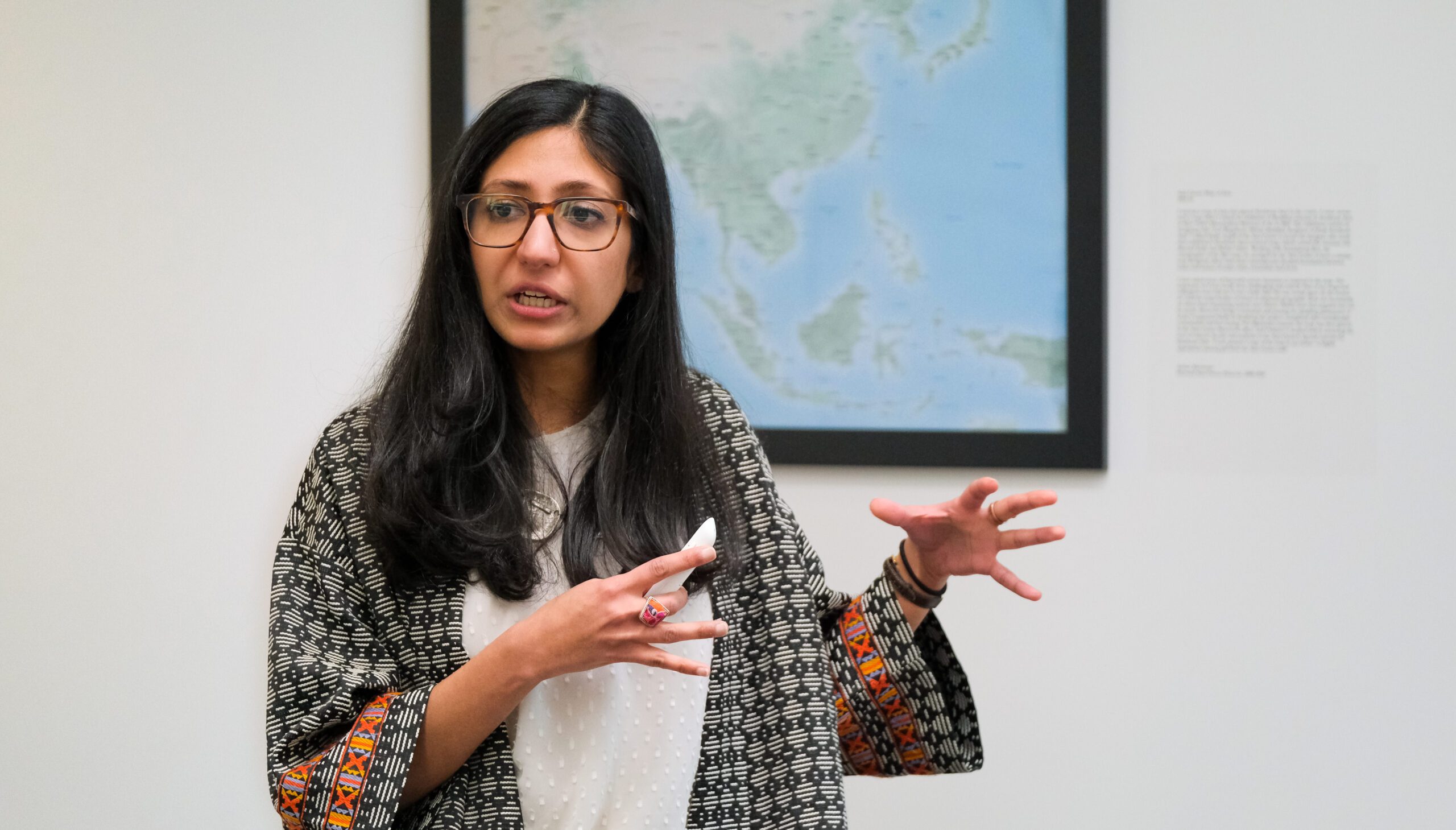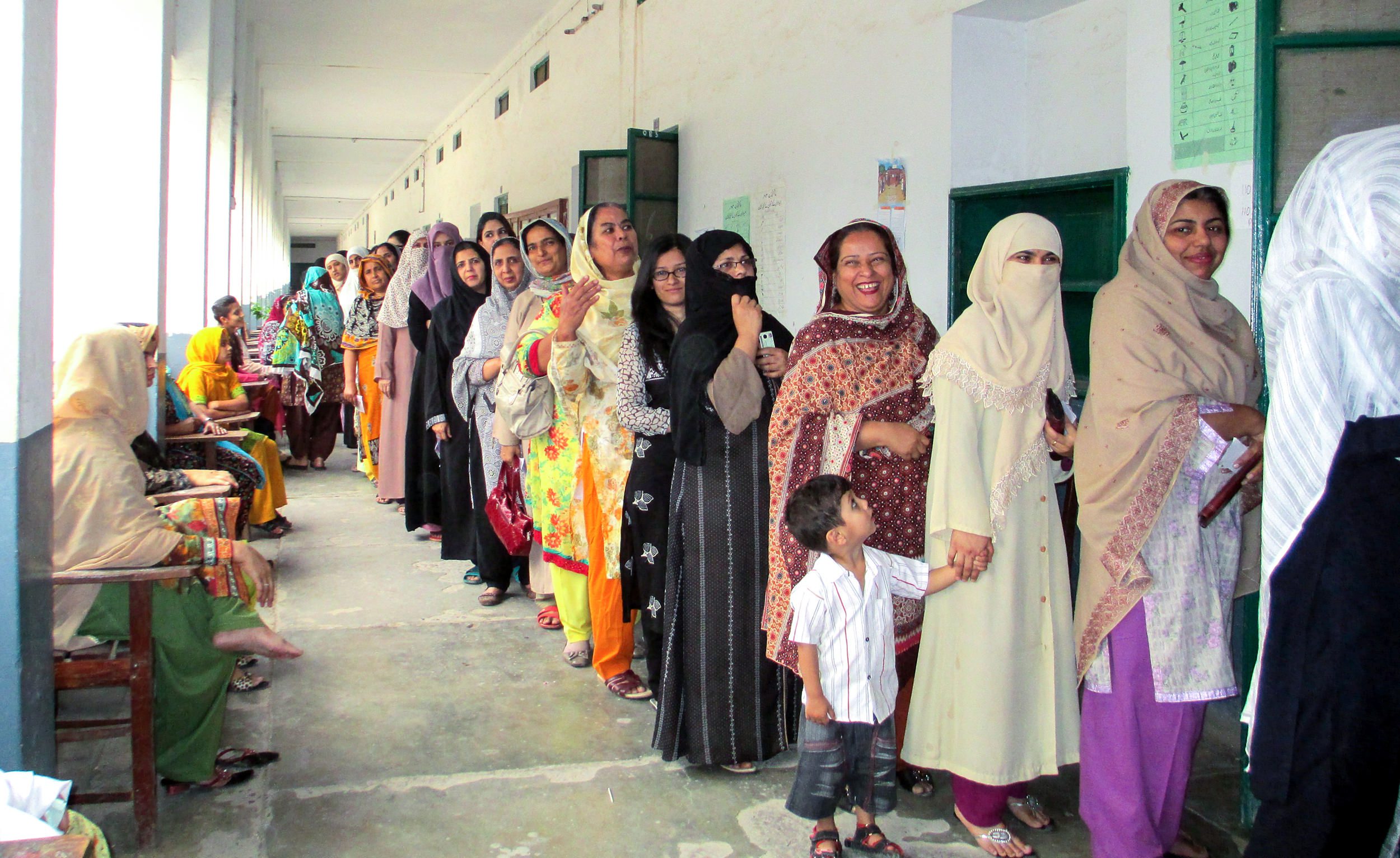
Sarah Khan, Postgraduate Associate at Yale MacMillan Center, gives a lecture on the gender gap in voter registration and turnout in Pakistan.
Sarah Khan, a Postgraduate Associate at Yale MacMillan Center, recently visited Harvard to discuss her team’s field experiment in Lahore during the 2018 Pakistan General Elections and their work to understand the gender gap in voter turnout in Pakistan.
“The question that we’re interested in as it pertains to Pakistan is: what explains — and relatedly — how can we close the large and persistent gender gap in voter turnout in Pakistan?” Khan asked.
What Is the Gender Gap?
Khan started with a holistic view of democratic voting around the world. “Despite the equal right to vote, what we actually see in most democracies are deep and persistent inequalities between groups and who actually turns out to vote. This is true in the developed and developing world, and these inequalities have existed along lines of income and gender.”
So why is there such a significant gender gap in voting in Pakistan? Khan’s team identified three levels to the problem. “The first is a gender gap in voter registration: women are just missing from electoral rolls; they’re less likely to be registered to vote. A second reason why there’s a gender gap in voting is an extreme scenario, this instance of explicit bans on women’s voting through agreements that exist between political parties and village elders in certain constituencies. This is most common in the Federally Administered Tribal Areas. Finally, there’s just an overall gap in turnout among registered voters across constituencies,” Khan said. “The gender gap in self-reported turnout is close to 20 percent.”
Breaking Down the Social Norms
One of the things Khan’s team wanted to measure were the social norms and perceptions that surrounded women’s voting in Pakistan, to begin understanding why this gap may exist.
“When we asked the question: ‘Is it appropriate for women to vote in general elections?’ most of our respondents said yes. But then we asked women and men, ‘What are the situations in which it is appropriate for men to stop women from voting?’” Khan said. They received the following answers from a sample of respondents in Lahore:
- In situations where men expect women will vote differently than them
- If the lines are too long
- If there’s a chance of fighting breaking out
- If it interferes with household duties
“In the first three, it seems that men are more willing to agree to restrictions on women’s voting, but in the case where it interferes with their household duties, this seems to be something that women have internalized more-so than men. Thirty percent of women say it would be a situation where it would be appropriate for men to stop women from voting, but only 18 percent of men do,” Khan explained.
New Solutions
The gender gap in Pakistan’s voting records has not gone unnoticed — and fortunately, it’s something that various actors have taken seriously.
“In terms of registration, in 2015 a number of civil society groups called for a women’s voter registration emergency. The Election Commission in Pakistan really responded to this. Between 2013 and 2018, there was a dedicated gender wing that was set up at the Election Commission,” Khan said. “They also made use of very granular registration data to target registration drives in places that had high gaps to get more women voters registered. Between 2013 and 2018, the number of registered women voters actually grew by 24 percent. But around the same time, male registered voters grew by 22 percent. Because these are roughly similar rates, the gap still exists.”

Women in Pakistan stand in line to vote.
When it comes to voter turnout, legislative measures have been taken to improve efficacy, including a clause in the 2017 Election Act. “This states that in constituencies where women voters comprise less than 10 percent of the total turnout, the election commission can actually declare the results of the election null and void and call for a reelection. This is explicitly meant to address the issue of agreements banning women from voting,” Khan explained.
Yet, despite these efforts, Khan’s team observed that before elections there were no notable partisan efforts to reach out to women voters.
Mobilizing Female Voters
So, which efforts work to mobilize women’s turnout?
“From the context of the United States and Europe through a collection of evidence, we’re now able to say pretty confidently that door-to-door canvassing is the strategy that works best to mobilize turnout,” Khan said. In Pakistan’s 2008 elections, information campaigns that targeted women were able to increase the group’s turnout.
According to political scientists, there are a few things that can drive turnout. “One of them is just how interested you are in political issues — and here we see a strong gender gap [in Pakistan],” Khan explained. “Then there’s a question about self-efficacy — do you consider yourself well-informed about the political process? The gap here seems to be smaller.”
There’s also a need to understand the different stances women may take on political issues. “How political parties contact voters … is heavily gendered. If the party leaders are convinced that women are just going to vote along with the male of the household, then it’s not worth it for them to go and separately contact the women,” Khan said.
Ultimately, it will take more work to shrink the gender gap in Pakistan’s voter turnout. But with a better understanding of the reasons for this gap, Khan, her team, and other researchers can begin to identify new ways to mobilize female voters throughout the nation.
This event was part of the South Asian Politics series co-sponsored by the Mittal Institute, the MIT Center for International Studies, the Watson Institute of International and Public Affairs at Brown University, the Center for Contemporary South Asia, and the Weatherhead Center for International Affairs.
